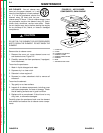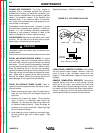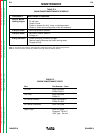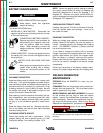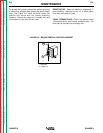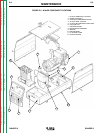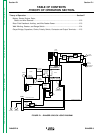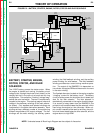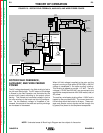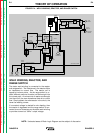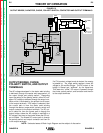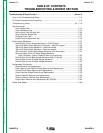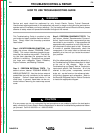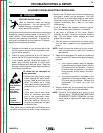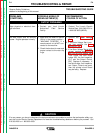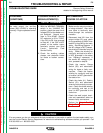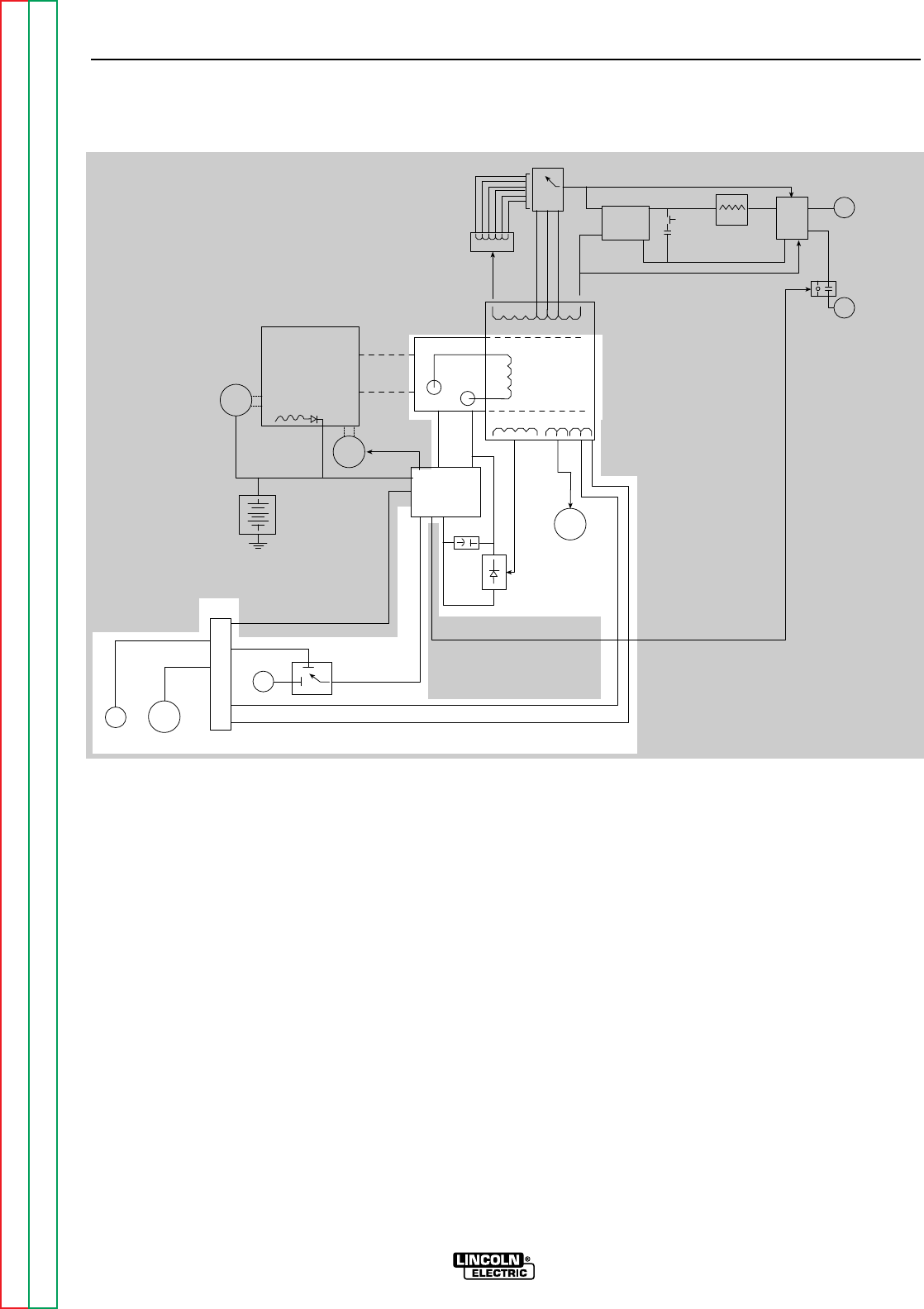
ROTOR FIELD FEEDBACK,
AUXILIARY, AND WIRE FEEDER
POWER
The AC voltage developed in the field winding is fed to
the full wave field bridge. The DC output of the bridge
is filtered by the field capacitor and controlled by the
printed circuit board according to the output control
setting. This filtered and controlled voltage is fed to
the rotor winding via the brush and slip ring configura-
tion. As the feedback voltage is increased or de-
creased, the outputs of the weld and auxiliary windings
are increased or decreased.
When full field voltage is applied to the rotor and the
engine is running at high speed (3700 RPM), a 230 AC
voltage is developed in the stator auxiliary winding.
This winding is tapped to provide 115 VAC. The two
voltages (115 VAC and 230 VAC), are connected to the
appropriate receptacles and offer 9000 watts (total) of
AC power.
The auxiliary wire feeder winding offers 115VAC and is
tapped to also provide 42VAC. The current draw from
this winding should be limited to 8 amps. These volt-
ages and remote control signals are fed through the
by-pass (filter) board to the amphenol receptacles.
THEORY OF OPERATION
E-3 E-3
RANGER 9 RANGER 9
Return to Section TOC Return to Section TOC Return to Section TOC Return to Section TOC
Return to Master TOC Return to Master TOC Return to Master TOC Return to Master TOC
NOTE: Unshaded areas of Block Logic Diagram are the subject of discussion.
FIGURE E.3 – ROTOR FIELD FEEDBACK, AUXILIARY, AND WIRE FEEDER POWER
WORK
TERMINAL
OUTPUT
CONTACTOR
ELECTRODE
TERMINAL
POLARITY
SWITCH
CHOKE
PART OF
RANGE
SWITCH
CAPACITORS
OUTPUT
RECTIFIER
BRIDGE
AC
AC
RANGE
SWITCH
REACTOR
STATOR
ROTOR
MECHANICAL
ROTATION
ROTOR
SLIP
RINGS
IDLER
SOLENOID
ENGINE
STARTER
BATTERY
FLYWHEEL
ALTERNATOR
PRINTER
CIRCUT
BOARD
FIELD
CAPACITOR
115 & 230VAC
RECEPTACLES
FIELD
BRIDGE
CONTACTOR CLOSURE
BY-PASS
BOARD
CONTACTOR CLOSURE
REMOTE
SWITCH
OUTPUT
CONTROL
6 PIN
AMPHENOL
14 PIN
AMPHENOL
115VAC
42VAC



